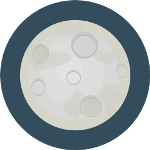Titania – Learn About The Largest Moon Of Uranus
A World Of Craters, Canyons & Cliffs
Titania is the largest of the five spherical moons of Uranus and the 8th largest moon in the solar system, Titania was named after the Queen of the Fairies from Shakespeare's A Midsummer Night’s Dream. Similar in appearance to several of Uranus’ other spherical moons, Titania is heavily cratered with an extensive system of enormous canyons and scarps cutting across its surface.
Fast Summary Facts About Uranus' Moon Titania
- Discovered: January 11th, 1787 by William Herschel
- Name: Named after a character in Shakespeare's ‘A Midsummer Night's Dream’
- Size: Diameter of 1,578 km (980.5 miles)
- Moon Rank: 8th Largest in the solar system
- Orbit: Prograde and Circular
- Orbit Radius: 435,910 km from Uranus
- Orbital Period: 8 days, 8 hours, 28 minutes
- Orbital Speed: 3.64 km/sec
- Orbital Inclination: 0.34° (to Uranus’ equator)
- Rotation: Synchronous (rotates once every revolution so the same side always faces Uranus – known as tidally locked)
- Density: 1.71 g/cm3
- Surface: Equally water-ice, rock and trace Carbon Dioxide
- Surface Temperature: An Icy -200 °C (60 - 90K)
More Cool Interesting Facts About The Fractured Titania!
- As with the rings and the other large moons of Uranus, Titania orbits close to its planet's equatorial plane. This means the moons share Uranus' extreme seasonal cycle on account of each pole experiencing permanent night or day for half a Uranian year – which is 42 Earth years!
- Scientists believe that Titania, like all of Uranus’ large moons, is likely composed of approximately half ice and half rocky material that is likely differentiated into a rocky core and icy mantle. It is possible that a thin liquid ocean may exist between the mantle and core if sufficient ammonia (or similar antifreeze compounds) and core heat exists.
- Titania’s surface is predominately grey with a slight red in tint (but less so than the moon Oberon), with fresh craters appearing slightly blue.
- Titania has a lower density of craters than the moons Oberon and Umbriel, implying it has a younger surface, but its largest crater called Gertrude is over 325 km in diameter.
- Besides craters, the other major geological feature of Titania is a number of colossal faults, cliffs and wide canyons the longest of which is called Messina Chasma and extends for nearly 1,500 km!
- Carbon Dioxide has been detected on the shaded or colder surfaces of Titania, meaning the moon may experience an extremely thin, seasonal atmosphere of CO2.
- There are also some relatively smooth plains which are likely younger surfaces and may have been formed by resurfacing by internal fluid (cryovolcanism) or blanketing by ejecta from nearby impact craters.
- The orbit of Titania is entirely within Uranus’ magnetosphere resulting in its surface being protected from the solar winds, but also being exposed to Uranus’ magnetic plasma believed to lead to a darkening of its trailing hemisphere.
- Every 42 years, around the equinoxes, it’s possible to capture a rare transit of Titania as the moon passes in front of Uranus, it can even occult one of the other major moons during this period.
- It is believed that Titania formed billions of years ago, from the accretion disc that surrounded the newly formed Uranus; perhaps even from debris from the colossal impact that pushed Uranus onto its side!
- The only probe to have visited the Uranus system (and its moons) was the Voyager 2 spacecraft in 1986, where it managed to photograph 40% of Titania’s surface during the probes brief flyby.
- Unfortunately, there are no plans for any future probes to visit Uranus (and its moons), but one day it’s hoped that a Uranus orbiter reaches this distant outpost!
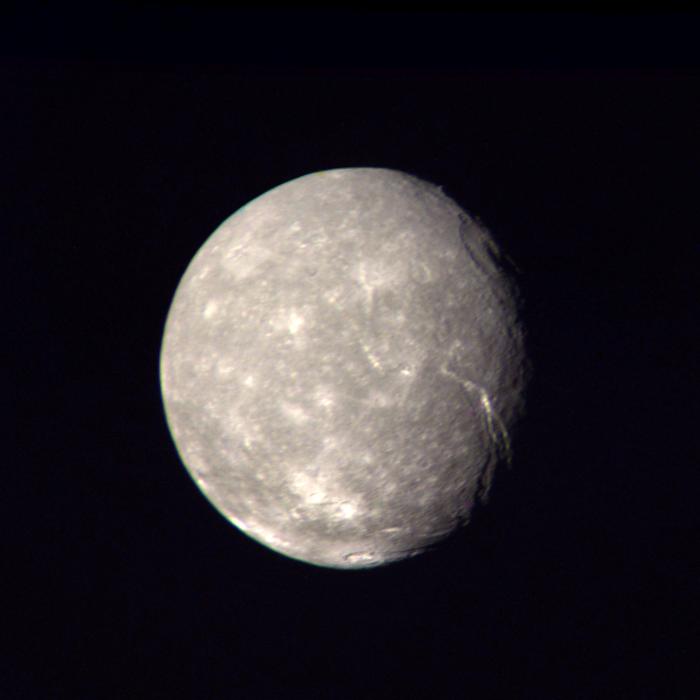
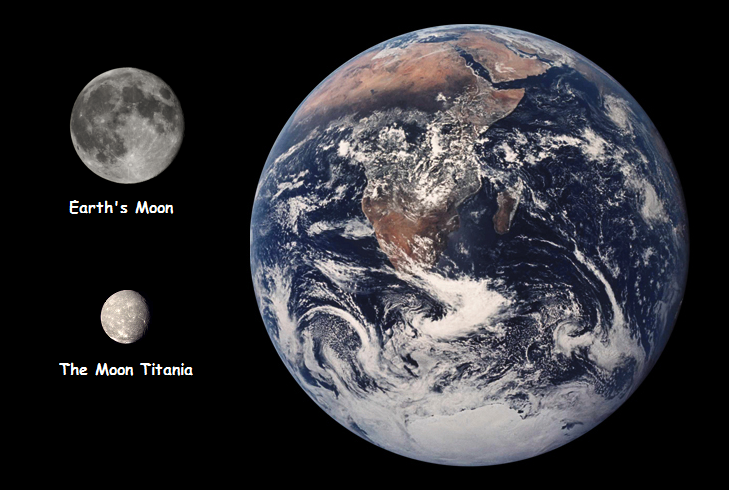
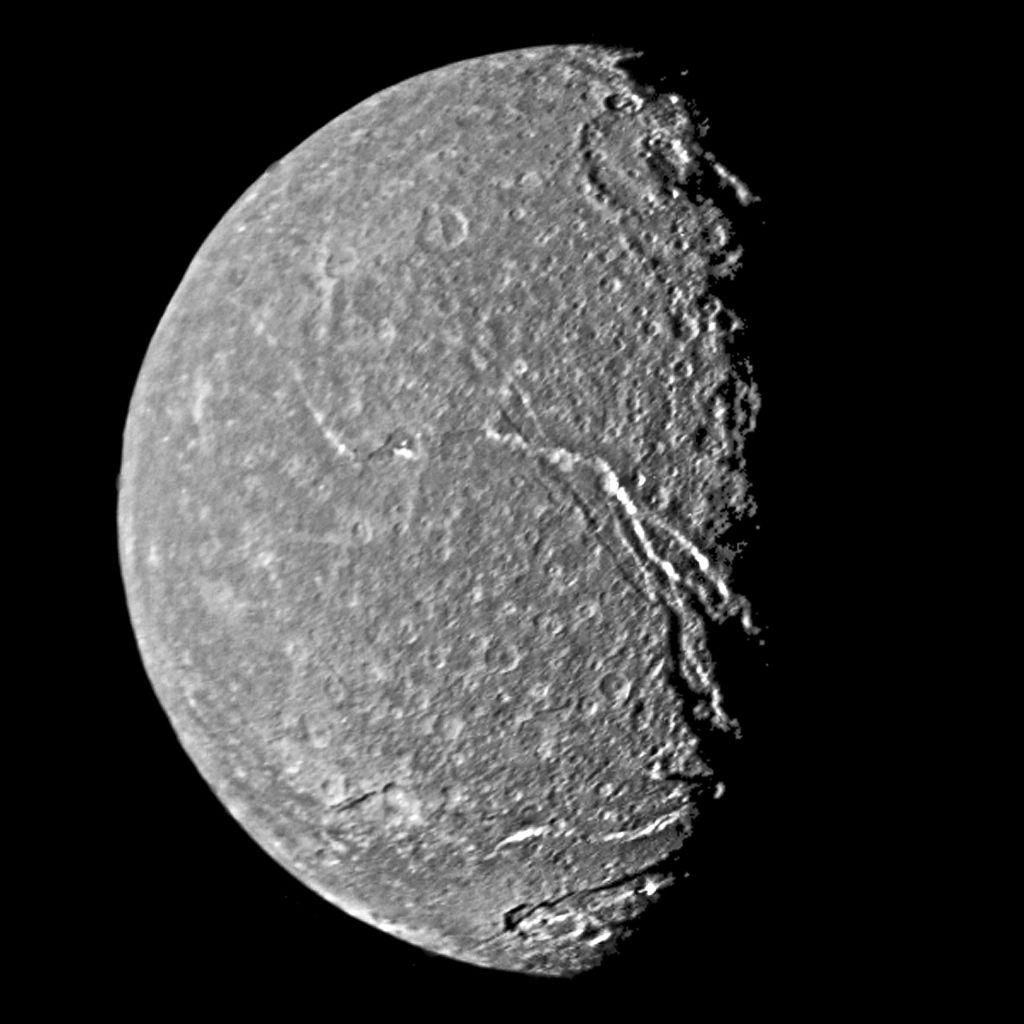
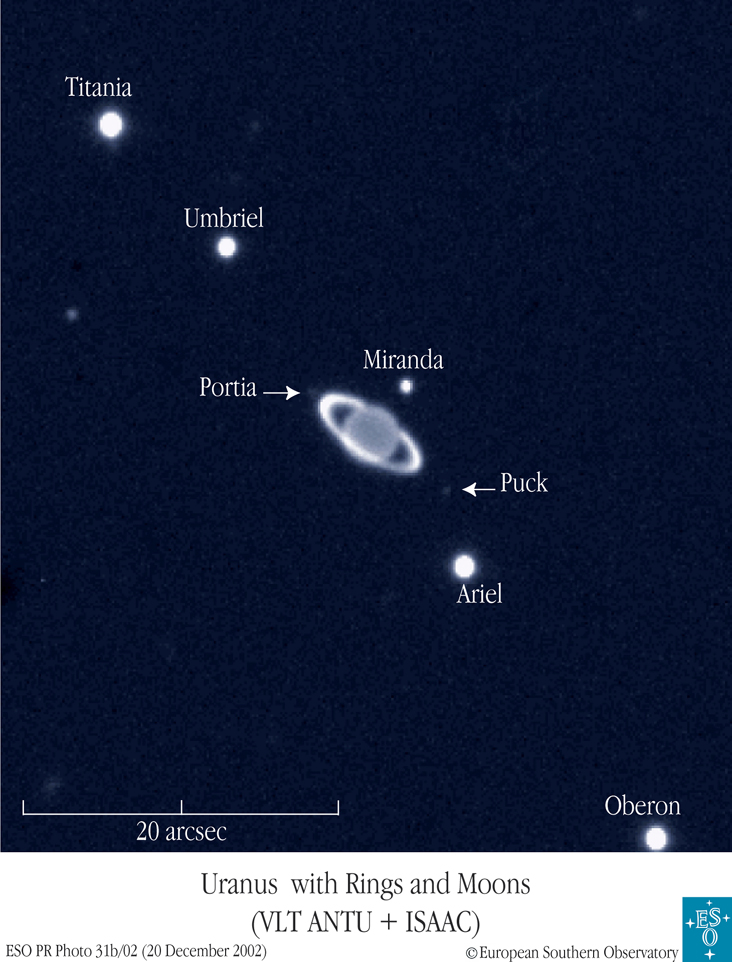
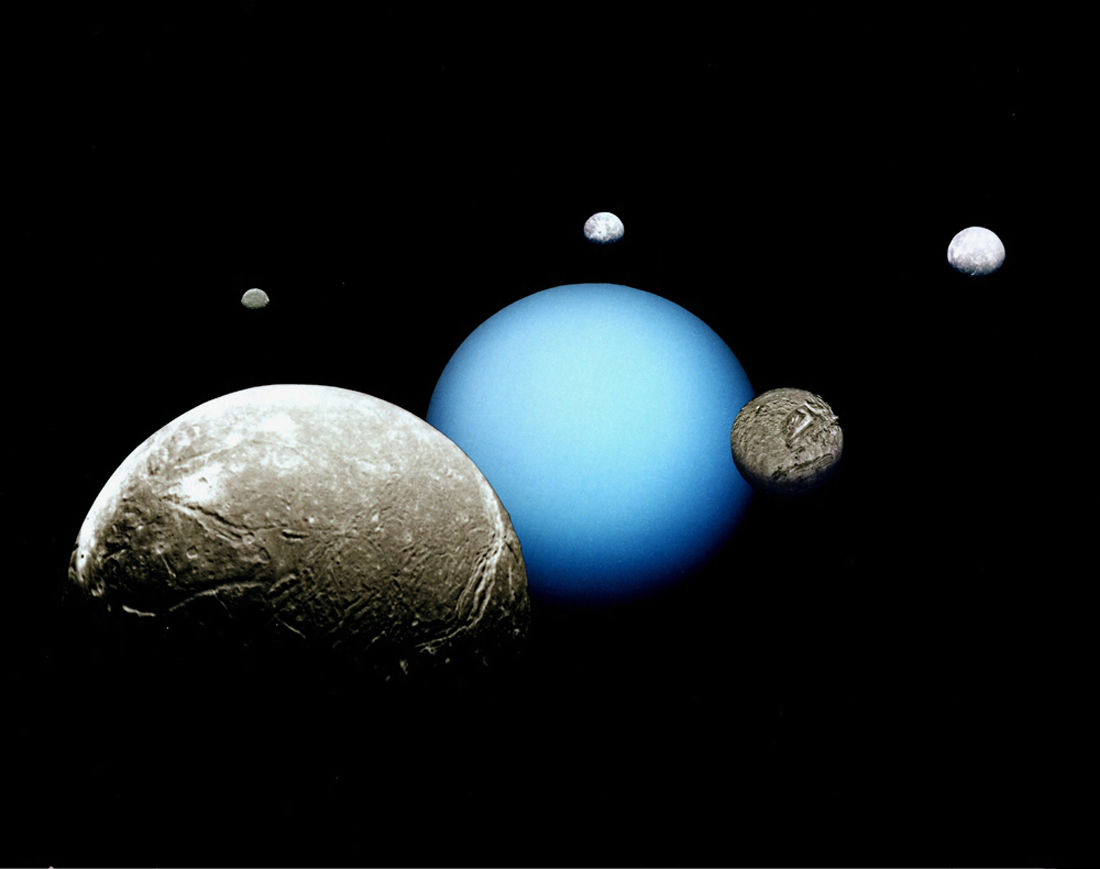
Titania
Titania Size Comparison
Titania Up Close
Uranus' Moons From Earth
Uranus' Moons


